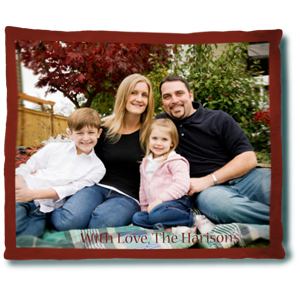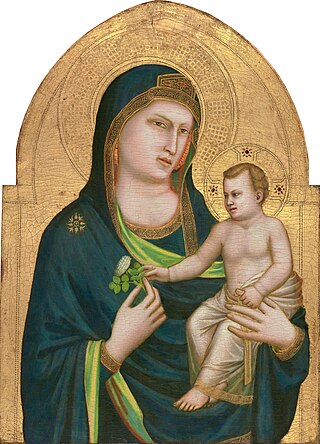
Tartarium, also known as cloth of Tars, was a luxurious textile during the Middle Ages. It was characterized by its high cost and was typically crafted through the combination of various materials.

Tartarium, also known as cloth of Tars, was a luxurious textile during the Middle Ages. It was characterized by its high cost and was typically crafted through the combination of various materials.
In Dante's time, the term "Tartar cloths" referred to rich fabrics of Oriental origin that were brought through Tartary from China and its borders. These cloths were known for their fine material, bright colors, and intricate designs, which were created either by weaving different colors on the loom or through other methods. [1] Tartarium was a highly expensive fabric made of royal purple color. It was likely crafted by combining silk and of goat's hair from Thibet. [2] [1]
Marco Polo, a Venetian merchant who lived from 1254 to 1324, identified Nasich and Naques as types of textiles made using gold, and Tartarium was one among the examples. Polo's writings suggest that the fabric was crafted using a technique that involved weaving strips of gold into it. This is clearly evident in his description of the Great Khan's attire on his birthday, which he notes was made of the finest robes fashioned from beaten gold. [3]
As per the glossary that accompanies the "Liber Custumarum" and the wardrobe account of RIC III, the fabric known as Tartaryn, which was utilized as a lining material, was composed of a blend of linen and wool. It was markedly different from the earlier fabrics produced in Tars. [4]
According to Warton, the term "Tars" does not refer to the city of Tarsus in Cilicia, but instead, it is an abbreviated form of "Tartarin" or "Tartarium". [4] The wardrobe accounts of Edward III of England indicate that "Tars" was an expensive item, as exemplified by the entry detailing a blue tartaryn jupon embellished with silver buckles, pendants, and garters. [4] Boccaccio, in his commentary, describes the Tartarium cloths as being so expertly woven that no painter could match their quality with a brush. [5]
The origin and naming of Tartarium cloth are subjects of conflicting accounts among the sources. According to Colonel Yule, Tartarium cloth was not named after Tartary because of its place of production, but rather because it was brought to Europe from China through the territories of the Tatar rulers. [3]
Du Cange defined it as a fine cloth manufactured in Tartary. [4] [5] Skinner suggests that Tartarium cloth may have originated from Tortona, which is a city in the Milanese region. [5]
In the literary work, "The Floure and the Leafe", Chaucer made reference to Tartarium, a type of fabric. [6] [7] In "The Flower and the Leaf", we encounter tapestries referred to as "verd", due to the abundance of trees present on them. These tapestries were adorned with a minstrel-gallery running along their length. The gallery was used as a gathering spot, where a group of individuals, wearing white cloaks and crowned with fresh oak garlands, congregated. They carried trumpets adorned with rich tartarium banners, displaying their lords' arms. The trumpets were decorated with wide collars embellished with large pearls, as no expense was spared in their creation. [6] [7]
Encyclopædia Britannica has mentioned Tartarium in the volume 12 under section of Gold.
In medieval Europe, cloth and fabrics infused with gold and silver threads were favored by royal figures and important religious leaders for their ceremonial attire, costly decorations, and hangings. These textiles were known by different names such as ciclatoun, tartarium, naques or nac, baudekin or baldachin (Bagdad), and tissue, and typically incorporated gold threads in conjunction with other materials. [8]
The inventories documenting the effects of Henry V make reference to russet and red tarteryns. Additionally, it is noted that the coote armor he wore was made of a Tars cloth. [4]

Tapestry is a form of textile art, traditionally woven by hand on a loom. Normally it is used to create images rather than patterns. Tapestry is relatively fragile, and difficult to make, so most historical pieces are intended to hang vertically on a wall, or sometimes horizontally over a piece of furniture such as a table or bed. Some periods made smaller pieces, often long and narrow and used as borders for other textiles. Most weavers use a natural warp thread, such as wool, linen, or cotton. The weft threads are usually wool or cotton but may include silk, gold, silver, or other alternatives.

Textile arts are arts and crafts that use plant, animal, or synthetic fibers to construct practical or decorative objects.
Tartar may refer to:
Ikat is a dyeing technique from Indonesia used to pattern textiles that employs resist dyeing on the yarns prior to dyeing and weaving the fabric. The term is also used to refer to related and unrelated traditions in other cultures. In Southeast Asia, where it is the most widespread, ikat weaving traditions can be divided into two general clades. The first is found among Daic-speaking peoples. The second, larger group is found among the Austronesian peoples and spread via the Austronesian expansion. Similar dyeing and weaving techniques that developed independently are also present in other regions of the world, including India, Central Asia, Japan, Africa, and the Americas

Fiber art refers to fine art whose material consists of natural or synthetic fiber and other components, such as fabric or yarn. It focuses on the materials and on the manual labor on the part of the artist as part of the works' significance, and prioritizes aesthetic value over utility.

Embroidery in India includes dozens of embroidery styles that vary by region and clothing styles. Designs in Indian embroidery are formed on the basis of the texture and the design of the fabric and the stitch. The dot and the alternate dot, the circle, the square, the triangle, and permutations and combinations of these constitute the design.

Cloth of gold or gold cloth is a fabric woven with a gold-wrapped or spun weft—referred to as "a spirally spun gold strip". In most cases, the core yarn is silk, wrapped (filé) with a band or strip of high content gold. In rarer instances, fine linen and wool have been used as the core.
The manufacture of textiles is one of the oldest of human technologies. To make textiles, the first requirement is a source of fiber from which a yarn can be made, primarily by spinning. The yarn is processed by knitting or weaving, which turns yarn into cloth. The machine used for weaving is the loom. For decoration, the process of colouring yarn or the finished material is dyeing. For more information of the various steps, see textile manufacturing.

African textiles are textiles from various locations across the African continent. Across Africa, there are many distinctive styles, techniques, dyeing methods, and decorative and functional purposes. These textiles hold cultural significance and also have significance as historical documents of African design.

The Andean textile tradition once spanned from the Pre-Columbian to the Colonial era throughout the western coast of South America, but was mainly concentrated in Peru. The arid desert conditions along the coast of Peru have allowed for the preservation of these dyed textiles, which can date to 6000 years old. Many of the surviving textile samples were from funerary bundles, however, these textiles also encompassed a variety of functions. These functions included the use of woven textiles for ceremonial clothing or cloth armor as well as knotted fibers for record-keeping. The textile arts were instrumental in political negotiations, and were used as diplomatic tools that were exchanged between groups. Textiles were also used to communicate wealth, social status, and regional affiliation with others. The cultural emphasis on the textile arts was often based on the believed spiritual and metaphysical qualities of the origins of materials used, as well as cosmological and symbolic messages within the visual appearance of the textiles. Traditionally, the thread used for textiles was spun from indigenous cotton plants, as well as alpaca and llama wool.

Samite was a luxurious and heavy silk fabric worn in the Middle Ages, of a twill-type weave, often including gold or silver thread. The word was derived from Old French samit, from medieval Latin samitum, examitum deriving from the Byzantine Greek ἑξάμιτον hexamiton "six threads", usually interpreted as indicating the use of six yarns in the warp. Samite is still used in ecclesiastical robes, vestments, ornamental fabrics, and interior decoration.

A photo blanket is a large, rectangular piece of fabric displaying images, pictures, or designs, often with bound edges, used as a blanket or decorative object. Historically photo blanket were made of thick cloth depicting people, objects, and symbols intended to tell a story or reveal historical events.
Sewing is the craft of fastening or attaching objects using stitches made with needle and thread. Sewing is one of the oldest of the textile arts, arising in the Paleolithic Era. Although usually associated with clothing and household linens, sewing is used in a variety of crafts and industries, including shoemaking, upholstery, sailmaking, bookbinding and the manufacturing of some kinds of sporting goods. Sewing is the fundamental process underlying a variety of textile arts and crafts, including embroidery, tapestry, quilting, appliqué and patchwork.

Mongol elements in Western medieval art can be seen in European works of art ranging from the 13th to the 15th century. They encompass artistic areas such as painting and textile manufacture, and mainly consist in the European use of Mongol 'Phags-pa script in Medieval European art, as well as the representation of "Tartar" cloth and Mongol soldiers in a number of contemporary European paintings.

The national costume of Indonesia is the national attire that represents the Republic of Indonesia. It is derived from Indonesian culture and Indonesian traditional textile traditions. Today the most widely recognized Indonesian national attires include batik and kebaya, although originally those attires mainly belong within the island of Java and Bali, most prominently within Javanese, Sundanese and Balinese culture. Since Java has been the political and population center of Indonesia, folk attire from the island has become elevated into national status.

The Game of Thrones Tapestry is a hand-crafted tapestry, woven by hand on a jacquard loom, with additional embroidery. The tapestry tells the entire story of the television show, Game of Thrones. It consists of seven 11-metre-long panels and one 10.5-metre panel. The eight panels depict scenes from each episode and include images of crew at work. The tapestry was commissioned by HBO and Tourism Ireland, the tourism bureau of Northern Ireland where HBO filmed much of the series.

Aura Soltana, also known as Ipolitan the Tartarian or Ipolita or Ippolyta, was a Tartar woman at the court of Elizabeth I after arriving from Russia to England, apparently as a slave.

Mary Zicafoose is an American textile artist, weaver, and teacher who specializes in ikat, an ancient technique in which threads are wrapped, tied and resist-dyed before weaving. Zicafoose is the author of Ikat: The Essential Handbook to Weaving Resist-Dyed Cloth (2020). Her works are part of private and public collections, including at least 16 embassies around the world as part of the U.S. Art in Embassies Program.
Chinese ornamental gold silk is a type of silk fabric which employs gold as ornamentation; Chinese ornamental gold silk originated in China and have a long history in China. Gold and silk were precious goods; the combination of both in textiles created one of the most valuable commodities. Several gold-ornamental techniques can be summarized as: gold foil, gold powder, and gold thread technique.
Tissue is a thin, transparent, and lightweight material. Tissue fabric is a suitable material for designing various types of garments, including saris. Tissue is characterized by the use of metallic yarns for decorative purposes. The tissue sari is composed of silk threads in the warp and zari in the weft.